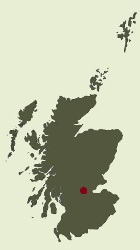 Bannockburn
Bannockburn
700 years ago, June 1314, a large force of about 18,000 soldiers, including 2,000 knights, crossed the border between England and Scotland and marched straight towards Stirling. Why? Because if the English did not relieve the English occupant of Stirling Castle by midsummer, it would be surrendered to the Scots. Now seriously, a castle smack in the middle of Scotland (Lowlands vs. Highlands), strategically important, the key to the north! This could not fall into Scottish hands. Because after all: Scotland was English. Daddy had decided so. Daddy being: Edward I, Hammer of the Scots. He had been ruthless in his days: stripping King John of his legal regalia; hanging, quartering and disembowling William Wallace; killing several of King Robert's brothers and imprisoning his wife and daughter. 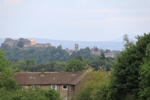 But then Edward had died in 1307, leaving the throne to his son, Edward II. For a couple of years, Edward II had allowed King Robert Bruce a breather. But in 1314, enough was enough. He was going to take his might into Scotland and crush those rebellious Scots. There was no King of Scots!
But then Edward had died in 1307, leaving the throne to his son, Edward II. For a couple of years, Edward II had allowed King Robert Bruce a breather. But in 1314, enough was enough. He was going to take his might into Scotland and crush those rebellious Scots. There was no King of Scots!
The army awaiting the English counted 6,000 men with only 500 horsemen. That was the bad news. They were heavily outnumbered. But there is something that King Robert had which Edward II did not : bravery, determination, patience and tactics.
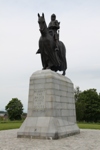 By agreeing to have Stirling Castle relieved, King Robert made sure the battle took place around Stirling, where he had been training his men. When the English army advanced on 23 June 1314, he moved his army to grounds where it would be difficult for Edward to deploy his cavalry. Natural elements such as trees, bogs and hills were used, and to make sure the English army went exactly where he wanted, King Robert had the open ground prepared with knee-deep pits, planted with stakes, to trap the horses. King Robert's most effective weapon was the shiltron: a gigantic, fast-moving hedgehog of some 500 to 1,000 spearmen. When attacked, the front line knelt with their pikes extended. The second line protected the first; the third line the second. Horses shied in terror and wouldn't come near. Knights in shining armour could not get to the spearmen. The knights were so frustrated that they threw their spears into the shiltron and retreated. That was good news.
By agreeing to have Stirling Castle relieved, King Robert made sure the battle took place around Stirling, where he had been training his men. When the English army advanced on 23 June 1314, he moved his army to grounds where it would be difficult for Edward to deploy his cavalry. Natural elements such as trees, bogs and hills were used, and to make sure the English army went exactly where he wanted, King Robert had the open ground prepared with knee-deep pits, planted with stakes, to trap the horses. King Robert's most effective weapon was the shiltron: a gigantic, fast-moving hedgehog of some 500 to 1,000 spearmen. When attacked, the front line knelt with their pikes extended. The second line protected the first; the third line the second. Horses shied in terror and wouldn't come near. Knights in shining armour could not get to the spearmen. The knights were so frustrated that they threw their spears into the shiltron and retreated. That was good news.
But it had started off even better. King Robert was not a king to watch his troops advance, but he stood right at the front line, where he was spotted by a young English knight who must have thought the Scottish king was an easy target with his lighter armer and only a battle axe at hand. The English knight charged and rode towards King Robert, who swerved at the very last moment, stood up and with a massive blow, planted his axe into the helmet of the cocky knight. That was day one.
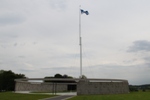 The English being low on morale, King Robert decided to attack. Twenty-four June 1314 started with prayer, he raised his standard, probably at the Borestone (at the museum) and then the battle commenced.
The English being low on morale, King Robert decided to attack. Twenty-four June 1314 started with prayer, he raised his standard, probably at the Borestone (at the museum) and then the battle commenced.
There are numerous books on how and when and who, although there is the slightly trivial matter of the exact location where the battle took place. There is one thing perfectly clear though: the outcome. The three giant hedgehogs pushed the cavalry back, King Robert's horsemen wiped out the enemy's archers, and in hand-to-hand combat, the English army was too packed together to take advantage of their greater numbers and was unable to oppose the Scottish soldiers who were experts in fighting at close quarters. The English (and the Scots fighting on English side) were either killed or driven back, across the Bannock Burn. Aye, it is a stream. Scotland has plenty of those.
Edward fled Scotland. It still took years before a peace treaty was signed. The Pope still had to recognise Scotland as an independent country, so there was this rather important document to send: the Declaration of Arbroath. But Scotland won the day, that day, 24 June 1314.
Immerse yourself in the battle at the Bannockburn Visitor Centre, where a 3D show and enthusiastic experts tell you all about the event. And if you don't want to witness arrows flying right through you, you could just stand outside, next to King Robert's statue and look at Stirling Castle, the key to the north.
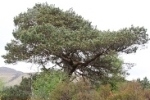 Home
Home
